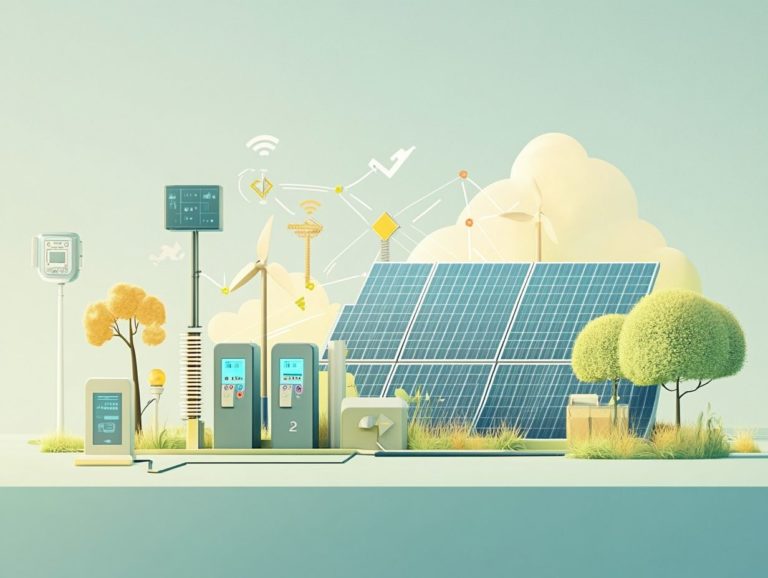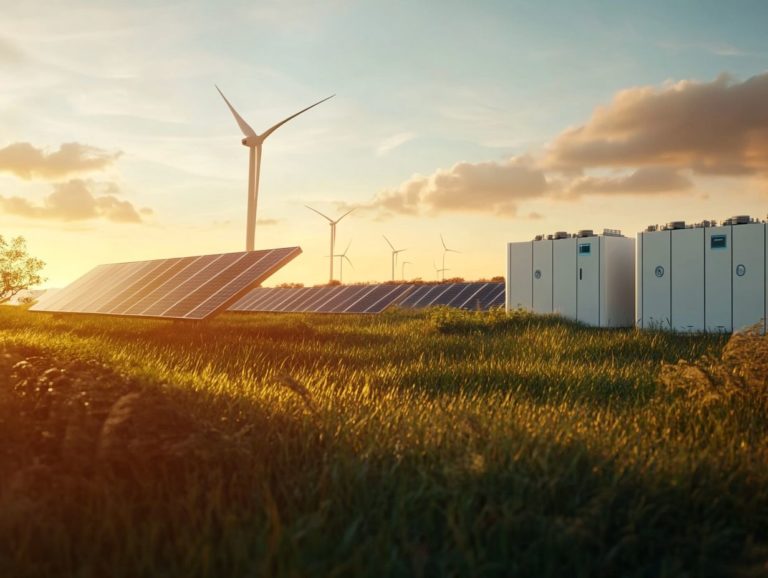Exploring the Benefits of Pumped Hydro Storage
Pumped hydro storage is becoming a vital component in the shift to renewable energy. It provides an effective means for energy storage and enhances grid stability.
In this article, you ll delve into the essentials of pumped hydro storage, uncovering how it operates and its significance in incorporating renewable sources like solar and wind.
You ll explore its numerous benefits, including cost-effectiveness and reliability. You will also consider the challenges it faces, such as environmental impacts and geographical constraints.
The piece highlights innovative advancements that could redefine its future. Discover the potential of this transformative technology and how it can shape the energy landscape moving forward!
Contents
- Key Takeaways:
- Overview of Pumped Hydro Storage
- How Pumped Hydro Storage Works
- Benefits of Pumped Hydro Storage
- Challenges and Limitations
- Future of Pumped Hydro Storage
- Frequently Asked Questions
- What is pumped hydro storage?
- How does pumped hydro storage benefit the environment?
- What are some economic benefits of pumped hydro storage?
- Can pumped hydro storage be used with other energy storage systems?
- What are some potential challenges of implementing pumped hydro storage?
- Are there any notable examples of pumped hydro storage being used successfully?
Key Takeaways:

- Pumped Hydro Storage uses water to store and produce electricity, making it a key player in renewable energy.
- It helps integrate renewable energy sources into the grid, ensuring stability and reliability of the energy system.
- Pumped Hydro Storage is a cost-effective solution for energy storage, with potential for future innovations and advancements.
Overview of Pumped Hydro Storage
Pumped hydro storage is an essential component of energy storage solutions.
It plays a pivotal role in balancing the electric grid and integrating renewable energy sources. As concerns about global warming intensify, this technology becomes increasingly relevant.
This technology harnesses the power of water to store energy, providing a dependable method for energy generation that can significantly reduce greenhouse gas emissions throughout its life cycle assessment.
Supported by respected organizations like the National Renewable Energy Laboratory and the U.S. Department of Energy (DOE), pumped storage hydropower systems are poised to be a cornerstone in the future of sustainable energy.
What is Pumped Hydro Storage?
Pumped hydro storage uses two water reservoirs at different heights to generate electricity. This utility-scale solution effectively addresses fluctuations in energy supply and demand.
By taking advantage of excess energy often produced during periods of low demand you can pump water from the lower reservoir to the higher one. When energy demand peaks, that stored water is released back down, driving turbines that transform gravitational potential energy into electricity.
This method supercharges operational efficiency with rapid response times and stabilizes grid performance by facilitating the integration of renewable energy sources. The design of pumped storage systems, featuring variable capacity and dual reservoir configurations, offers flexibility to manage large-scale energy resources effectively.
This makes them critical in today s modern energy landscape.
How Pumped Hydro Storage Works
The operation of pumped hydro storage showcases a refined interaction between energy generation and storage.
During times of low electricity demand, water is pumped from a lower reservoir to an upper reservoir, effectively capturing potential energy.
This stored energy is then ready for release into the electric grid during peak demand periods, ensuring a seamless supply when it s needed most.
The Process of Pumping and Generating Electricity
The process of pumped storage hydropower begins when you harness excess electricity from the grid to move water from the lower reservoir to the upper reservoir, effectively enhancing your storage capacity for future energy generation.
This method not only utilizes surplus energy that would otherwise go to waste during off-peak hours but also employs advanced turbine-pump technology to maximize efficiency.
As you lift the water, gravitational potential energy is stored in the upper reservoir. When demand surges, you release the stored water, allowing it to flow back down to the lower reservoir through turbines, generating electricity in the process.
The key energy dynamics at play involve converting mechanical energy into electrical energy, with overall system efficiency often exceeding 80%. This makes pumped storage an essential asset during peak demand periods, enabling grid stability and supporting the integration of renewable energy sources like wind and solar. Additionally, exploring the benefits of combined heat and power storage can further enhance energy management strategies.
Benefits of Pumped Hydro Storage
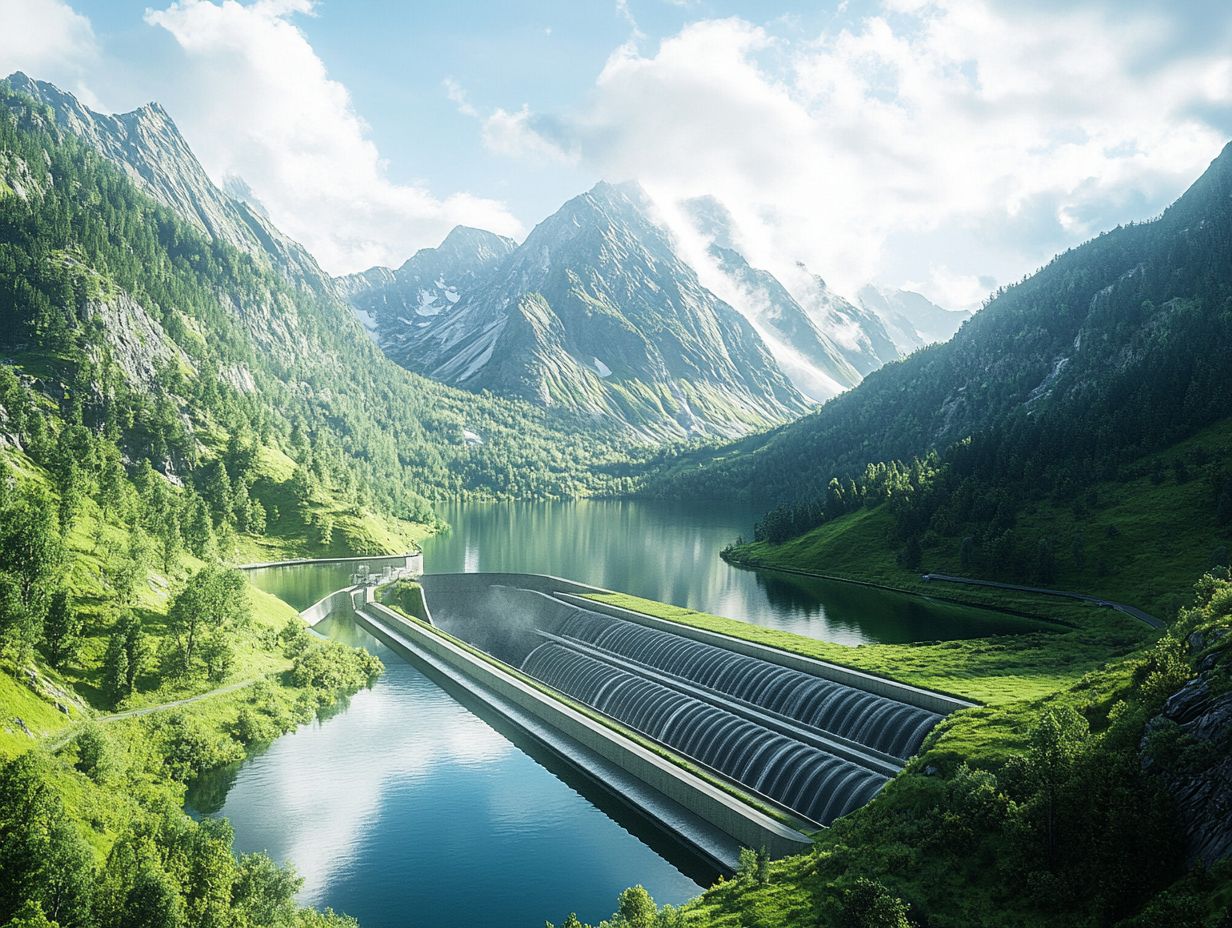
Pumped hydro storage offers incredible advantages that can transform our energy future! It allows for the seamless integration of renewable energy into the electric grid.
This technology significantly enhances grid stability and reliability, providing a robust and dependable energy solution.
It is also a cost-effective method for energy storage. This ensures you maximize energy efficiency while contributing to a sustainable future.
Renewable Energy Integration
Pumped storage hydropower is essential for integrating renewable energy seamlessly. It offers a reliable and flexible energy storage solution.
This system expertly balances supply and demand, especially during unpredictable fluctuations in solar and wind generation.
This innovative system harnesses surplus energy to elevate water, effectively storing potential energy. This energy can be swiftly tapped into during peak demand periods.
By addressing the inherent unpredictable availability of wind and solar power, pumped storage plays a vital role in stabilizing the electric grid.
It ensures a consistent energy supply even when natural sources aren’t operating at full capacity. This shift toward renewable energy makes the technology crucial now more than ever.
It paves the way for a resilient energy infrastructure that can meet both present and future demands.
Grid Stability and Reliability
One of the key advantages of pumped storage hydropower lies in its remarkable ability to provide grid stability and reliability. This ensures a consistent energy flow even during peak demand times.
Think of it as a colossal battery: this innovative technology allows you to store energy during off-peak hours when electricity is plentiful and more affordable.
When demand surges typically during bustling hours the stored water is released to generate electricity. This provides immediate power to the grid.
This mechanism helps with frequency regulation, which maintains the balance between supply and demand. It also enhances load balancing, facilitating the efficient integration of renewable energy sources.
As a result, pumped storage promotes energy efficiency and fortifies the grid against fluctuations. It ensures a dependable supply for consumers like you.
Cost-Effectiveness
Pumped storage hydropower stands out as a cost-effective utility-scale energy storage solution. It offers you a low-cost way to efficiently store large amounts of energy.
This technology demands a lower initial investment compared to other energy storage options. It also showcases impressively low operational costs over time.
By utilizing off-peak electricity to pump water to higher elevations, it transforms potential energy into usable electricity during peak demand periods.
This ultimately delivers substantial long-term savings. Many energy providers are now embracing this sustainable practice.
They recognize its importance in enhancing grid stability and decreasing reliance on fossil fuels.
The benefits of pumped storage position it as a vital contributor to the transition toward a greener, more efficient energy landscape.
Challenges and Limitations
Although pumped storage hydropower offers many advantages, it s crucial to acknowledge the significant challenges and limitations that accompany it.
You may encounter concerns regarding environmental impact and geographical constraints that can hinder the feasibility of new projects. Addressing these issues is essential for maximizing the potential of this energy source.
Join the movement toward a sustainable future by exploring how pumped hydro storage can benefit you!
Environmental Impact
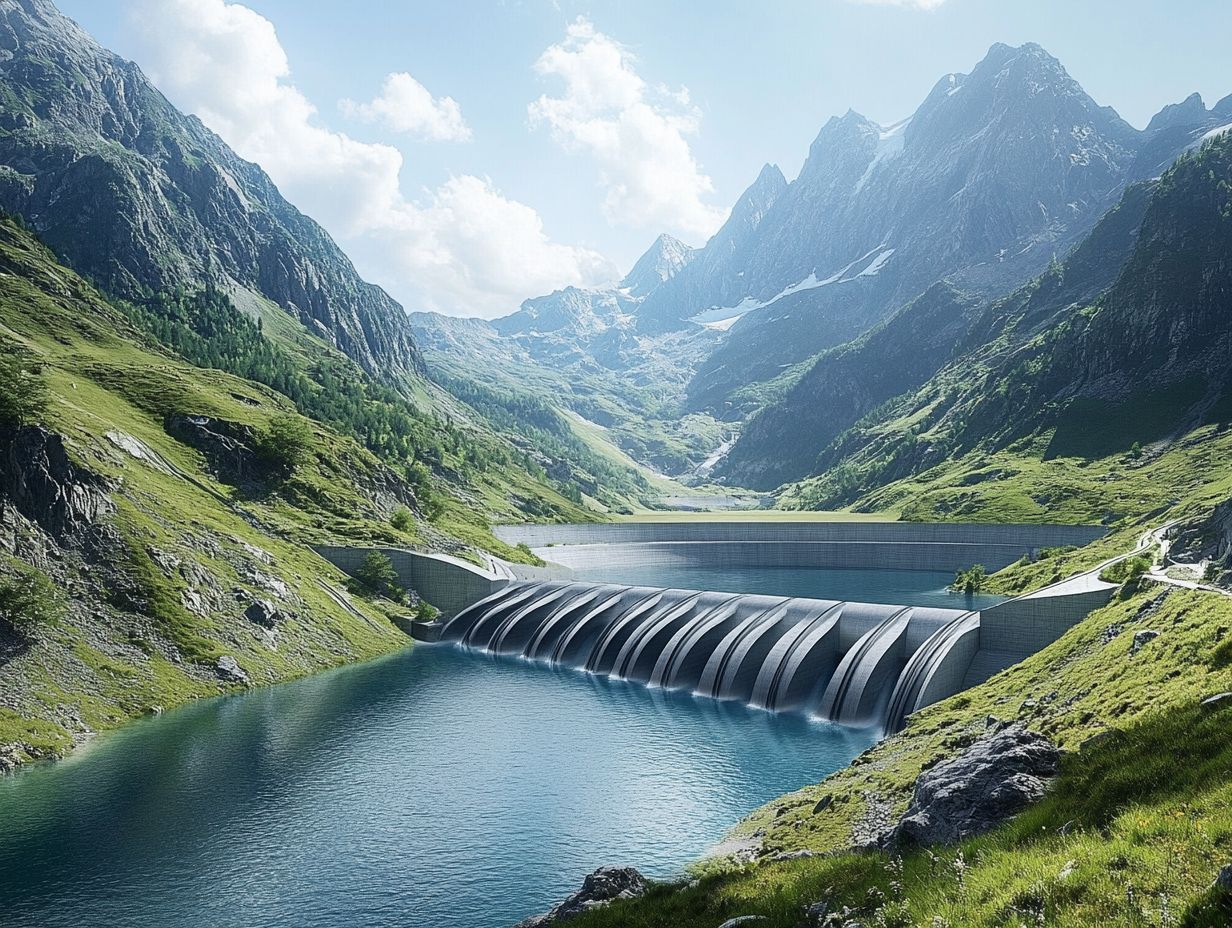
The environmental impact of pumped storage hydropower is crucial. It demands a detailed study of environmental impact over the product’s life to understand its greenhouse gas emissions and ecological effects.
Such assessments reveal the potential for renewable energy generation. They also highlight the need to balance energy demands with ecological integrity. These projects use the natural flow of water to generate electricity, and advocates often stress their ability to enhance grid stability and store excess energy from sources like wind and solar, as well as exploring the benefits of hydrogen energy.
Consider potential drawbacks like disturbance of animals and plants in their natural homes, water quality issues, and changes to ecosystems that could arise from building and operating reservoirs. Sustainable development relies on addressing these challenges while maximizing benefits. This makes stakeholder engagement and thorough environmental studies essential for success.
Geographical Constraints
Geographical constraints pose significant challenges for pumped storage hydropower. Finding suitable locations for reservoirs and water sources can feel like searching for a needle in a haystack, impacting overall hydropower capacity.
These limitations arise from various factors, including topography, environmental regulations, and proximity to existing energy infrastructure. When considering potential sites, it’s essential that they provide necessary elevation differences for effective water movement and align with local land use policies while passing environmental impact assessments.
The availability of enough water supply is another vital factor. In arid regions, the feasibility of such projects significantly decreases. As a result, developers often face increased costs and extended timelines while searching for viable locations, which can hinder the financial viability and attractiveness of investing in energy storage options like pumped storage alternatives.
Future of Pumped Hydro Storage
The future of pumped hydro storage looks bright and full of potential, driven by a surge of innovations and advancements in renewable technologies.
Institutions like the National Renewable Energy Laboratory and the U.S. Department of Energy (DOE) are diligently working to improve its efficiency and seamless integration into the energy landscape.
This commitment opens exciting opportunities for growth in this vital sector don’t miss out!
Innovations and Advancements
Recent innovations and advancements in pumped storage hydropower focus on enhancing energy efficiency, optimizing system performance, and integrating cutting-edge renewable technologies into existing frameworks.
Among these breakthroughs, you’ll find advanced materials designed to boost turbine efficiency and the use of artificial intelligence for real-time monitoring and maintenance, which can significantly reduce operational costs.
New techniques using gravity-assisted energy storage systems, which use the force of gravity to store and release energy, show potential to complement traditional methods. These developments aim to lower carbon footprints and play a vital role in stabilizing the grid, better accommodating the variable nature of solar and wind energy. Additionally, exploring the benefits of using flow batteries for storage can enhance energy management solutions.
Ultimately, the synergy of these technologies paints a promising future for energy storage, ensuring that reliable and sustainable energy solutions are within reach.
Frequently Asked Questions
What is pumped hydro storage?
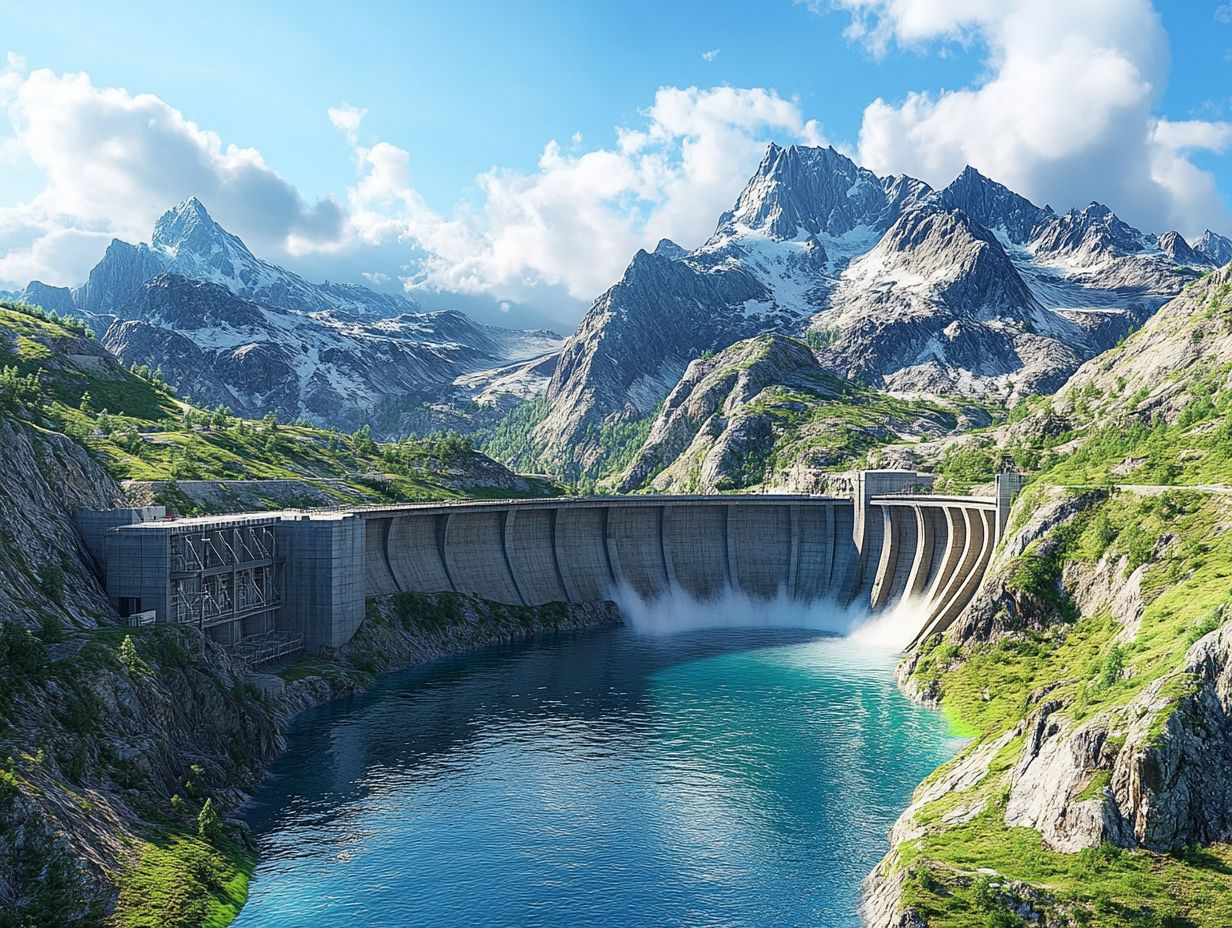
Pumped hydro storage is a type of energy storage system that uses two reservoirs at different elevations to store and release energy. Water is pumped from a lower reservoir to an upper reservoir when energy is abundant and then released back to the lower reservoir through a turbine to generate electricity when energy is needed.
How does pumped hydro storage benefit the environment?
Pumped hydro storage helps reduce carbon emissions and fight climate change. It stores renewable energy from sources like wind and solar for use during peak demand.
What are some economic benefits of pumped hydro storage?
This storage method keeps electricity prices steady by providing a reliable energy source. With some facilities lasting over 100 years, it is a cost-effective energy solution.
Pumped hydro storage also creates jobs in construction and maintenance.
Can pumped hydro storage be used with other energy storage systems?
Yes, it works well with systems like batteries. This combination leads to a stable and reliable energy supply, especially during peak times.
What are some potential challenges of implementing pumped hydro storage?
High construction costs and finding suitable locations are significant challenges. Environmental impact and community support also play crucial roles in the planning process.
Are there any notable examples of pumped hydro storage being used successfully?
Absolutely! The Bath County Pumped Storage Station in Virginia, USA, is the largest in the world with a capacity of 3,003 MW. In Australia, the Snowy Hydro Scheme has been a major renewable energy source since 1974.

